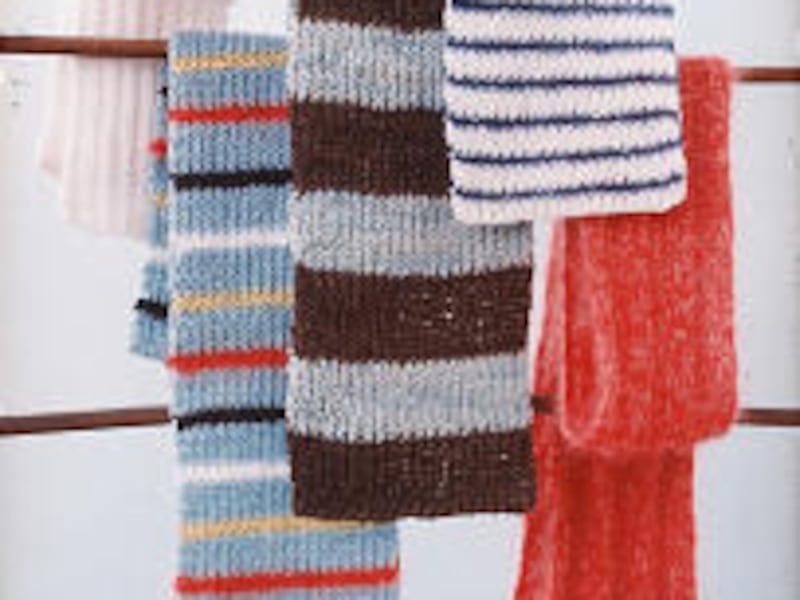Question: I have almost finished knitting a simple scarf. Is there a trick to keep the edges from curling?
Answer: Unwanted rolling at the edges of an otherwise attractive finished garment can frustrate even the most skilled knitter. Such rolling can happen for a number of reasons, but the most likely culprit is the stitch itself.
Stockinette, for example, a basic and commonly used stitch made from alternating knitted rows with purled ones, always tends to curl at the edges. (In fact, many knitting patterns are written to take advantage of this.) A lightweight yarn will emphasize this curl, while a heavier yarn will minimize the effect.
Also, if your cast-on and cast-off stitches — the stitches you use to begin and end a garment — are tighter than the rest of the knitting, you will more likely encounter curling at the ends of the piece. You can alleviate the problem somewhat by blocking the finished scarf.
To do this, lay it on a padded ironing board, pull at the edges so the whole piece lies flat and pin it in place. Spray a linen tea towel or dishcloth with water until it is quite damp, and lay the towel on top of the scarf.
Then press the fabric with a steam iron on a high setting (never press directly onto a knitted piece with a hot iron). The heat and steam will stretch the yarn somewhat, relaxing the tension that leads to curling. Do not unpin the scarf until it is completely cool and dry.
Blocking is a good finishing technique for nearly any hand knitting. It helps to smooth seams and give the whole piece a neater, more professional look. You should not expect it to completely uncurl a stockinette-stitched scarf, however. To further reduce curling, you might try adding a decorative crocheted edge or a trimming of ribbon to the finished scarf.
In the future, try knitting a garter-stitch (knit only) border for several rows on a stockinette scarf, or knit the whole thing in a stitch that does not present a curling problem, such as ribbing (alternating knits and purls, stitch by stitch).
Question:How do you clean the inside bottom of a teakettle?
Answer: Even if you use it only for boiling water, your kettle still needs cleaning. The minerals in water inevitably build up, causing discoloration and odor.
To remove deposits, boil equal parts water and white vinegar inside the kettle. Remove from heat and let sit for several hours before rinsing with clean water.
Question:What is the difference between a turnip and a rutabaga? Can one be substituted for another?
Answer: Turnips and rutabagas are root vegetables that are similar in appearance and flavor. Tucked safely underground, they can survive bitterly cold weather
The turnip has white skin and flesh and a purplish top. Younger turnips have a more delicate, sweeter taste than more mature turnips, which often taste slightly woody. Rutabagas, usually sold waxed, look like large turnips and are actually thought to be a cross between turnips and cabbage.
Questions should be addressed to Ask Martha, care of Letters Department, Martha Stewart Living, 11 W. 42nd Street, New York, N.Y. 10036. Questions may also be sent by electronic mail to: mslletters@marthastewart.com. Please include your name, address and daytime telephone number.. For more information, visit www.marthastewart.com. © Martha Stewart Living Omnimedia, Inc. Distributed by New York Times Special Features

